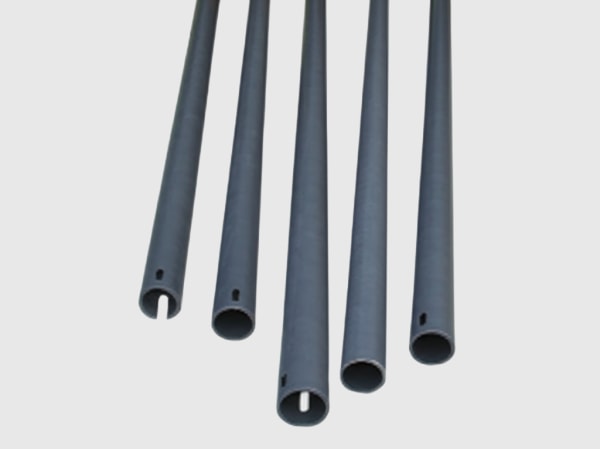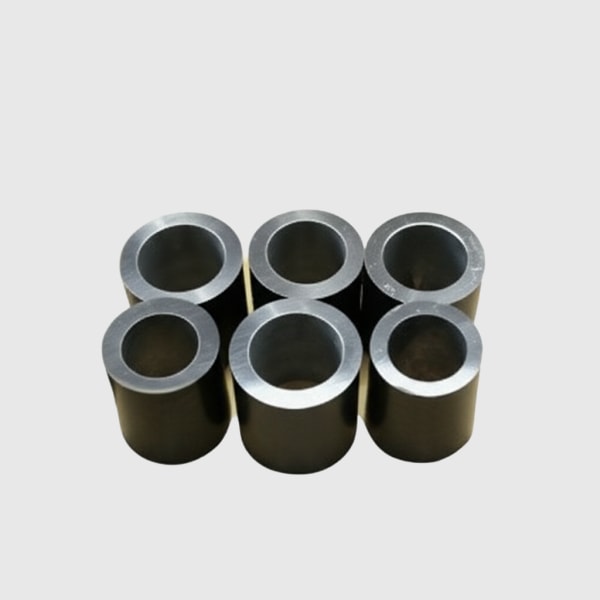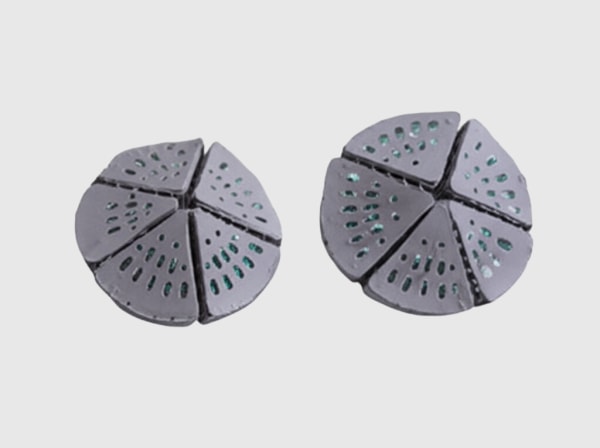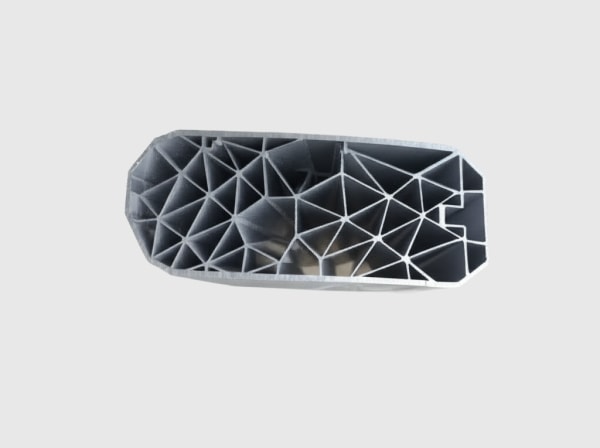Product Overview and 2025 Market Relevance
High-frequency drive and control systems designed for 20–50 kHz operation unlock the full performance potential of silicon carbide (SiC) power converters in Pakistan’s textile, cement, steel, and emerging industrial sectors. By pairing advanced digital control platforms with low-inductance power stages, these systems deliver precise current and voltage regulation, superior transient response, and consistent uptime in harsh conditions with high temperature and dust. SiC-optimized controllers reduce switching and conduction losses, enabling >98% rectification and conversion efficiency in industrial rectifiers, inverters, and DC drive front ends.
In 2025, industrial facilities in Punjab and Sindh face grid instability, legacy control hardware, and tight energy budgets. Upgrading to SiC-optimized high-frequency control provides 10%–15% annual energy savings, 30%–40% reductions in cooling footprint, and >50% reductions in failure rates. Maintenance cycles shift to once every two years, and typical ROI is achieved within 2–3 years. These drive and control systems integrate seamlessly with MODBUS TCP, PROFINET, EtherNet/IP, DNP3, and OPC UA, and support IEC 62477-1 safety, IEC 61000 EMC, and IEC 60747 device documentation for streamlined acceptance. They enable multi-pulse rectification (12/24-pulse), active front-end (AFE) functions for low THD, and model-based torque/current control for high-performance drives.

Technical Specifications and Advanced Features
- Control and computation
- Processing: High-performance MCU or FPGA for sub-10 µs control loops
- Control modes: Field-oriented control (FOC), direct torque control (DTC), vector control for AC/PM motors; closed-loop DC current control for DC drives
- PWM schemes: Space vector modulation (SVM), discontinuous PWM, interleaved carriers at 20–50 kHz
- Model-based features: Observer-based speed estimation, flux estimation, adaptive gain scheduling
- Measurement and sensing
- Current sensing: Shunt or Hall sensors with >200 kHz bandwidth
- Voltage sensing: Precision dividers with high CMRR isolators
- Thermal monitoring: NTC/RTD inputs for junction and coolant temperatures
- Health indicators: Lifetime counters for capacitors, switches, fans/pumps
- Protection and reliability
- Fast desaturation detection, short-circuit protection, surge/arc mitigation
- Safe torque off (STO) interface; soft-start and DC-link pre-charge
- Conformal-coated PCBs, vibration-resistant hardware, conformal EMI gaskets
- Communication and integration
- Protocols: MODBUS TCP, PROFINET, EtherNet/IP, DNP3, OPC UA for SCADA interoperability
- Cybersecurity: Role-based access, encrypted channels for remote diagnostics
- Data: Real-time KPIs, energy counters for ISO 50001 audits, alarm/event logging
- Environmental design
- Operating conditions: -20°C to +60°C ambient (controller), device junction up to 175°C supported at power stage
- Enclosure: IP54+ options with filtered or sealed cooling paths
- Thermal management: Compatible with liquid-cooled power stages; 30%–40% smaller cooling systems enabled by high-frequency operation
- Compliance support
- Safety: IEC 62477-1
- EMC: IEC 61000 series
- Devices: IEC 60747
- Documentation: Guides for ISO 50001 energy and ISO 14001 environmental programs
High-Frequency Control Benefits Compared to Legacy Control Platforms
| Design outcome | 20–50 kHz SiC-Optimized Drive and Control | Legacy Low-Frequency Control (Silicon-focused) |
|---|---|---|
| Efficiency across duty cycle | >98% system rectification/conversion efficiency | 90%–94% typical |
| Magnetics and filters | Smaller inductors/filters due to higher switching | Larger passive components |
| Dynamic performance | Fast torque/current response; low ripple | Slower transients; higher ripple |
| Cooling requirements | 30%–40% smaller cooling footprint | Larger heat sinks and airflow |
| Reliability in dust/heat | >50% lower failure rate with sealed design | Higher failure rates |
| Maintenance interval | Once every 2 years | About twice per year |
| Payback period | 2–3 years via energy and OPEX savings | Longer due to higher OPEX |
Key Advantages and Proven Benefits with Expert Insight
- Energy and cost savings: 10%–15% lower annual energy consumption and reduced HVAC loads.
- Precision control: High bandwidth loops improve torque stability, reduce mechanical stress, and enhance product quality in steel rolling and textile spinning.
- Compactness: High-frequency operation reduces magnetics size and cabinet depth, easing brownfield retrofits.
- Robustness: Conformal-coating, IP-rated designs and EMI-optimized layouts resist dust and heat typical of cement and mining environments.
Expert quote:
“SiC power trains paired with high-frequency digital control unlock significant efficiency and dynamic performance gains, reducing passive component size and improving reliability in harsh industrial sites.” — IEEE Power Electronics Magazine, Industrial WBG Control Strategies (2023)
Industry reference:
“Through 2025, industrial SiC adoption is driven by system-level OPEX reductions and power density improvements enabled by higher switching frequencies.” — Yole Group, Power SiC Market Monitor (2024)
Real-World Applications and Measurable Success Stories
- Cement plant variable frequency drives
- Result: Chain efficiency improved from 92.3% to 98.1% with SiC-optimized control at 20–30 kHz; cooling skid footprint reduced by ~35%; uptime increased from 8,000 to 8,760 hours in a clinker workshop; annual electricity savings >120,000 USD.
- Steel rolling mill drives and auxiliary inverters
- Result: Faster torque response reduced strip breakage; harmonic performance improved with AFE, lowering transformer heating and trips.
- Textile spinning and weaving lines
- Result: Lower cabinet heat and better speed regulation improved yarn consistency and loom uptime; denser layout achieved without thermal penalties.
- UPS front ends for industrial and data centers
- Result: AFE-based control reduced THDi and enhanced power factor; improved conversion efficiency lowered lifecycle energy costs.
Selection and Maintenance Considerations
- Frequency selection: 20–30 kHz balances losses and EMI for high-power drives; up to 50 kHz where compact magnetics or acoustic targets apply.
- Grid quality: Evaluate need for 12/24-pulse rectification or AFE for THD limits; set ride-through profiles for local sags/swells.
- EMC layout: Use laminated busbars, short gate loops, shield terminations, and dv/dt filters for motor insulation compatibility.
- Environmental hardening: Specify IP54+ enclosures and sealed cooling for dust-heavy sites; validate thermal paths near kilns or furnaces.
- Maintenance plan: 24-month service cycle—sensor calibration, firmware updates, connector torque, coolant/filter checks, and EMI gasket inspection.
Industry Success Factors and Customer Testimonials
- Success factors: Power-quality audit, model-based tuning, thorough EMI/EMC testing, and operator training for diagnostics and alarms.
- Customer voice: “Our SiC drive controls stabilized torque under grid dips and cut cooling complexity, leading to more predictable uptime and output quality.” — Maintenance Manager, integrated steel producer in Punjab.
Future Innovations and 2025+ Market Trends
- Higher voltage SiC ecosystems (to 3.3 kV): Simplifying medium-voltage front ends and reducing series elements.
- Intelligent edge control: Embedded analytics, digital twins, and predictive maintenance for early fault detection and optimized efficiency.
- Local capability growth: Technology transfer and regional assembly/testing to shorten lead times and enhance service in Pakistan.
- Sustainability KPIs: Direct support for ISO 50001 metrics and energy intensity reporting for export-oriented mills.
Industry outlook:
“Efficiency and digitalization are central to industrial decarbonization; high-frequency SiC control delivers both, providing rapid payback and resilience.” — International Energy Agency, Technology Perspectives (2024)
Common Questions and Expert Answers
- What is the ideal switching frequency for heavy-duty drives?
- 20–30 kHz is a robust starting point; 40–50 kHz is suitable where smaller magnetics, lower ripple, or acoustic targets are critical.
- Can high-frequency controllers retrofit into existing cabinets?
- Yes. Adapter kits for IO, busbars, and fiber/ethernet links enable phased retrofits while preserving transformers and cabling.
- How are EMI and motor insulation managed at higher dV/dt?
- Use dv/dt filters, shielded cable terminations, proper grounding/bonding, and optimized gate drive to balance speed and emissions.
- What protocol support is available for SCADA integration?
- MODBUS TCP, PROFINET, EtherNet/IP, DNP3, and OPC UA with structured tags and alarms for maintenance workflows.
- What lead times are typical?
- Standard configurations: 6–10 weeks; custom variants and enclosures: 10–14 weeks with local partner commissioning support.
Why This Solution Works for Your Operations
High-frequency drive and control systems optimized for SiC converters deliver immediate, measurable gains: >98% efficiency, smaller cooling systems, and faster, more stable control under Pakistan’s challenging grid and environmental conditions. They integrate smoothly with existing infrastructure, meet IEC/ISO expectations, and provide a reliable path to lower OPEX and higher throughput with a 2–3 year payback.
Connect with Specialists for Custom Solutions
Accelerate your modernization with end-to-end SiC control expertise and turnkey delivery.
- 10+ years of SiC manufacturing expertise
- Chinese Academy of Sciences backing and innovation
- Custom product development across R-SiC, SSiC, RBSiC, and SiSiC materials
- Technology transfer and factory establishment services
- Turnkey solutions from material processing to finished products
- Proven track record with 19+ enterprises
Request a free consultation, feasibility assessment, and plant-specific ROI model. Secure performance guarantees and a phased implementation plan tailored to your drives, rectifiers, and UPS front ends.
- Email: [email protected]
- Phone/WhatsApp: +86 133 6536 0038
Recommended next steps: Share single-line diagrams and load profiles, schedule a power-quality and EMI pre-check, and pilot a high-frequency SiC control upgrade with measurable KPIs.
Article Metadata
- Last updated: 2025-09-12
- Next scheduled update: 2026-03-31
- References: IEEE Power Electronics Magazine (2023) Industrial WBG Control Strategies; Yole Group Power SiC Market Monitor (2024); International Energy Agency Technology Perspectives (2024)






